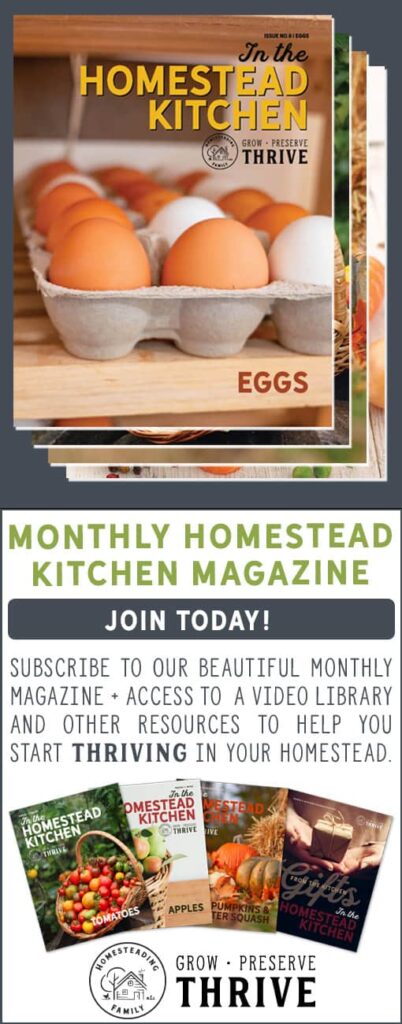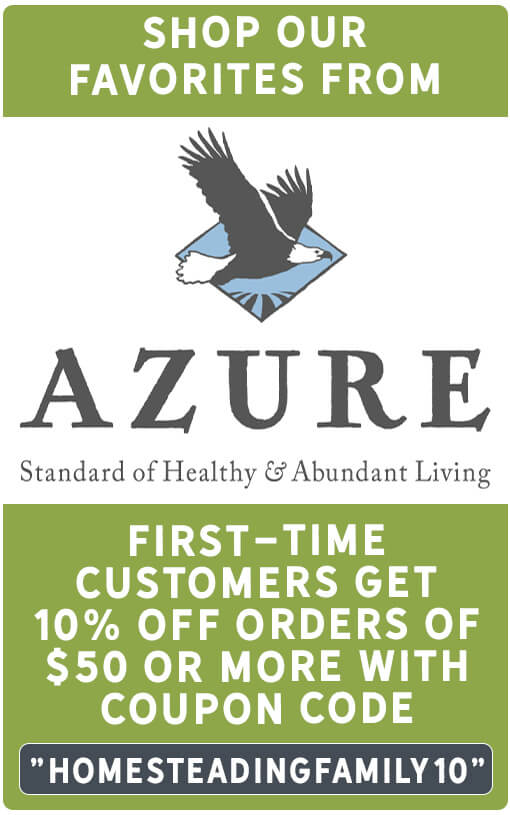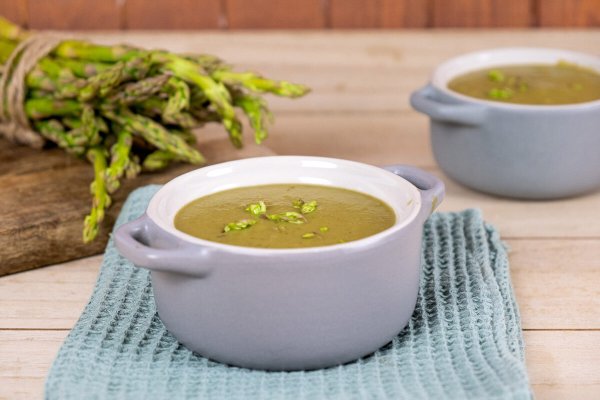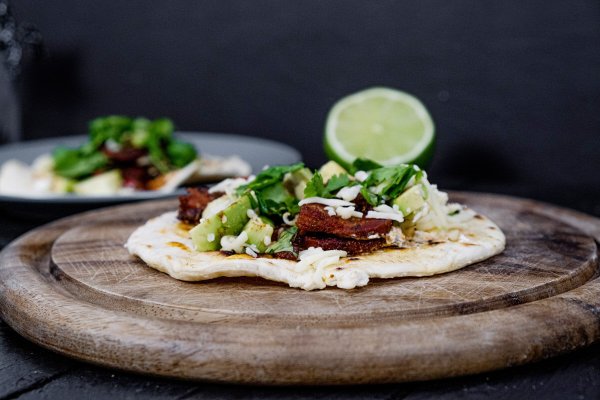Learn how we, as homesteaders, can become an asset to the land and not a drain on the resources by utilizing multi-species rotational grazing, even on a small homestead or in a backyard setting!

Rotational grazing is not a new concept. It’s been around since creation. How to mimic nature and utilize these methods on a homestead has been taught very well by people such as Joel Salatin and Greg Judy.
After years of studying, implementing, making adjustments, and narrowing down how to make these methods work on a smaller scale, we’ve finally found a flow that’s making huge strides to improve the pastures on our homestead.
If the thought of implementing rotational grazing has you stressed out, remember Joel Salatin’s words that sometimes, “Good enough is perfect!” We’ve certainly learned that through our many years of homesteading.
Some other posts you may want to check out (after this one, of course) are homesteading skills to learn now, permaculture design and mistakes to avoid when designing your homestead, learning how to prioritize homestead projects, the ten things we wish we knew before we started homesteading, and even how to get started homesteading.
Why We Love This Method
When we purchased our homestead, our land had been overused, sprayed with chemicals and neglected for quite some time. (There’s a chance there was glyphosate usage on the property before we moved here that could be causing our problem with glyphosate toxicity now.)
The pastures were degraded and completely rundown. After five years of implementing multi-species rotational grazing, we’ve noticed incredible improvements in the sustainability of our land.
Five years ago, the same amount of pasture couldn’t even sustain four sheep. Now it can sustain a dairy cow, eight sheep, 70 laying hens, over 400 meat chickens, and some Kune Kune pigs during the growing season each year.
So how do we take these rotational grazing methods and scale them down for the small homesteader (or even someone raising backyard chickens)? I’m glad you asked!
Whenever we’re implementing new systems here on Riverbend, we’re always looking to the core permaculture principles to help guide our decisions:
- Caring for People
- Caring for the Land
- Creating a Surplus
Years ago, we got started by renting land and raising cattle to earn income while acquiring our homestead. We studied the methods of holistic grazing and were able to implement that as we were always leasing large areas of land for our cattle.
Our current homestead is 40 acres, however, we’re only intensively utilizing about five to eight of those acres. On these acres, there are two houses, a large barn and garage, a couple of ponds, multiple garden areas and pastures. Our pasture area is only about three acres, which can make rotational grazing for multiple species a little bit more tricky.
But as mentioned above, we’ve been able to support all the food we need to raise for a year for our own family (while supplementing hay during the winter season), plus a surplus of food for our son’s chicken and turkey business. Read this post on how we stock our barns for winter.

Wild Grazing vs. Confined Grazing
Wild Grazing
Historically, ruminant animals would roam the land looking for the best quality forage or plants with the medicinal benefits that they need.
These animals would prioritize and eat the most nutritional or beneficial forage (usually only the top half of the forage which was most nutrient-dense, leaving the bottom half). They would then continue roaming to find more of the best forage.
Without fences, the animals had the freedom to move around, finding all the forage they needed and allowing the previously eaten forage to continue growing.
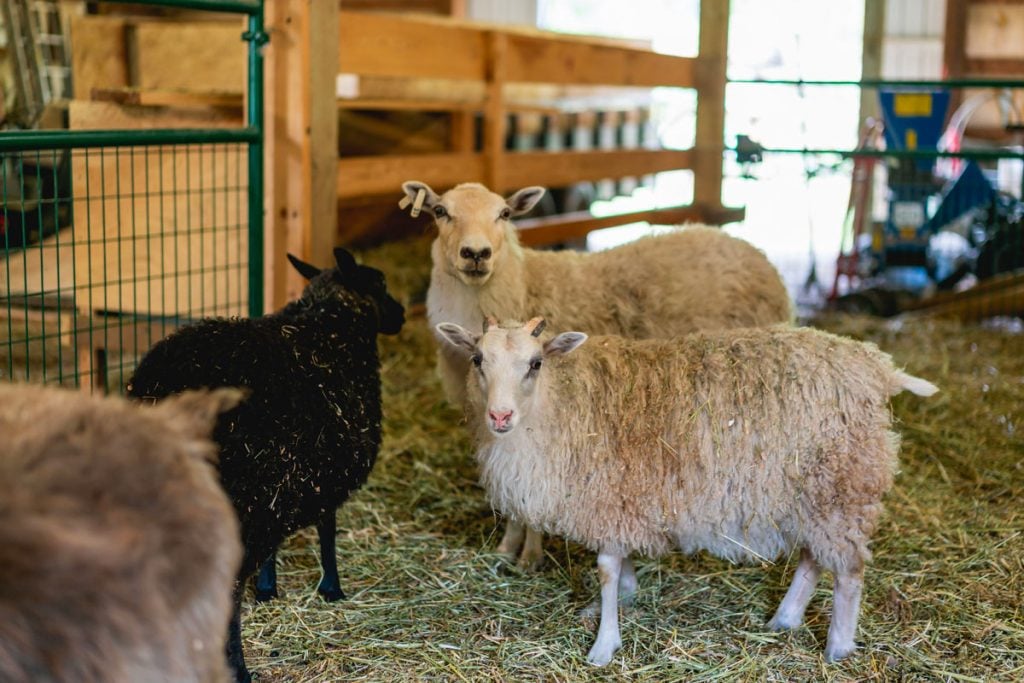
Confined Grazing
However, with the introduction of fences, the animals are forced to roam for the best forage within their confined borders. So instead of only eating the top half of the best forage, they’ll return to it repeatedly, eating it to the ground until it’s gone.
They’ll continue this process of eating “the next best thing” until that forage is no longer available. Animals are smart and know what tastes good (ultimately, what’s best for them).
What eventually happens is after they return to the “best forage” over and over, they’ll begin to degrade the land to the point that they will destroy the best quality forage within the pasture. What’s left is a degraded pasture of mostly annual plants of lower quality, creating run-off issues and other kinds of degradation.

What is Rotational Grazing
Rotational grazing (sometimes called management-intensive grazing) seeks to mimic the wild pattern of grazing within fixed boundaries.
We control what forage the animals can access by utilizing small spaces (usually with portable electric netting/fencing) and moving the animals more frequently. We also control how long the animal is on a portion of land and how long until they return to that portion of land again.
Since the animals don’t have free range, they can’t overgraze or degrade the pasture by only eating the best forage. They’re forced to eat what’s there, all the while fertilizing the pasture, improving the soil, and building up the land instead of degrading it.
Benefits of Rotational Grazing
As mentioned above, the benefits of rotational grazing are many for the land. Not only does the grazing essentially “prune” the forage, helping it to grow back stronger and healthier, but the animals are fertilizing the ground with their manure, they’re aerating the soil with their hooves (cows, sheep, goats) or by scratching and pecking (as with chickens) and they’re keeping parasite pressure lower by constantly moving.
Furthermore, you’re raising healthier animals because they have access to all the best forage on a rotational basis. When you introduce multiple species into this rotation, you can compound those benefits even further.

Multi-Species Rotational Grazing
Since we’re constantly looking to nature and creation for inspiration on how to run a homestead, we like to mimic multi-species rotational grazing practices. There are no mono-cultures in nature. God didn’t create things this way. There are always interworking species and systems.
We want to create as much resiliency as possible on our homestead in order to produce as much food as we can on the land we have. By combining species in our rotational grazing system, we find there are multiple benefits that occur.
Historically (in America), you would see birds that followed along with the bison. This relationship was symbiotic and each animal benefited from the other. For instance, the bison provided manure, which produced bugs that the birds would eat. All the while, the birds were helping protect the bison from parasites.
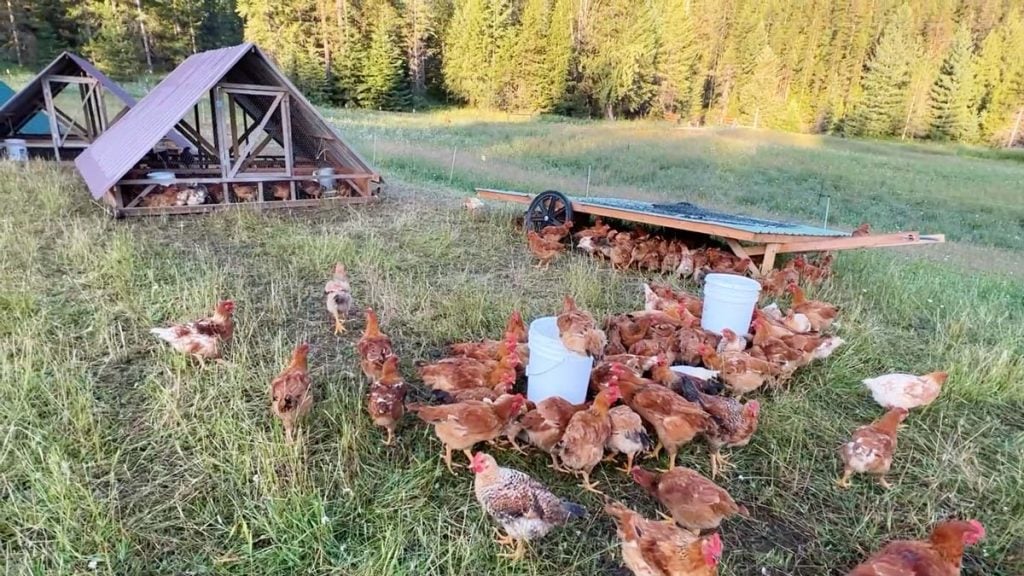
Rotational Grazing on a Small Scale
If you watch your animals, they’re incredibly predictable. Even our chickens, who are provided ample space, when left to their own devices, will return to a specific area where they’ll dig up the grass and create dust baths, causing a lot of damage to the pasture grasses.
This damage doesn’t happen after only one or two days. The damage happens when they’re allowed to stay in one spot for three or more days. So the key to avoiding this damage is to make sure and move them every one to two days to fresh pasture.
Even if you only have a small backyard area, you can utilize these rotational grazing practices by keeping your chickens in a smaller area, either with poultry netting or a chicken tractor, and moving them to a new area every day or two. (Here is our honest review of the Happy Farmer Mobile Chicken Coop.)
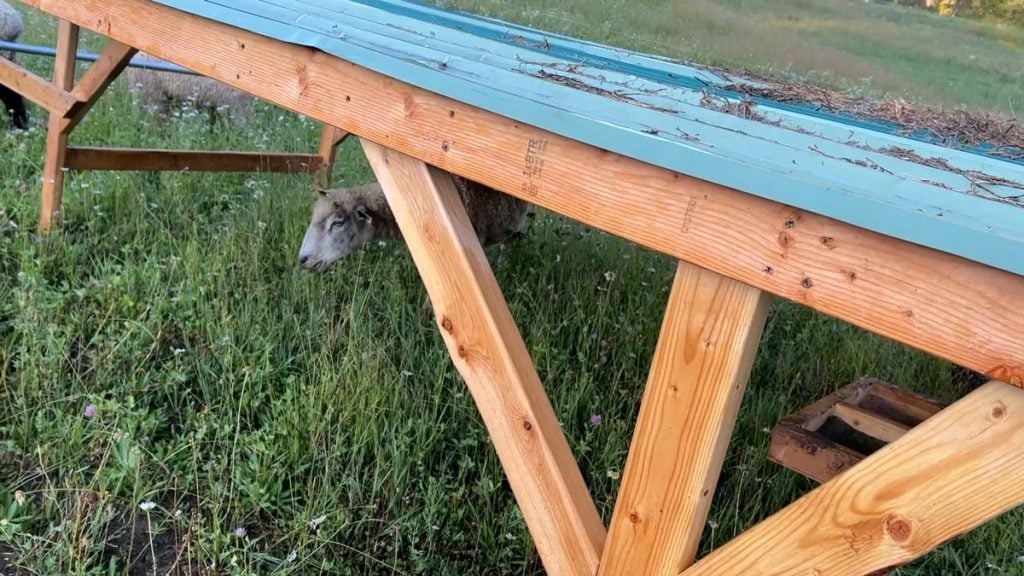
Animal Order for Rotational Grazing
There are many ways to mimic this system with more than one species, even on a small scale. The general rule of thumb is that ruminants get first choice on a new paddock. The animals that you want to get the first choice of grasses (such as dairy animals). Next would come the sheep or beef cows, followed by pigs (be careful with rooting pigs that could destroy your pasture; we use Kune Kune pigs because they’re not rooters). Finally, in the rear will be your birds (aka the clean-up crew). This could be chickens, turkeys, ducks, geese, or a combination of birds.

Example of Multi-Species Rotational Grazing
Let’s say you’re working with a small area and you have a dairy cow and some egg-laying chickens (or meat chickens), it will look something like this:
- Set up your dairy cow on a small paddock of land. Ideally large enough that the cow eats 50% of the available forage in a day.
- Move your cow to a new paddock every day.
- Two days after the cow was in a paddock, turn your chickens out onto the same paddock.
- By this time, the chickens will have plenty of bugs (larvae) to eat from the cow manure.
- This helps keep the fly population down on the farm (which benefits the cows).
- As the chickens scratch and peck for the larvae, they spread the cow manure, fertilizing and aerating the land.
- Because the chickens have spread the manure out, this benefits the pastures because, if the manure isn’t spread out, the cows generally won’t want to return to that portion of grass for a few years since it will be so high in nitrogen.
By implementing multi-species rotational grazing practices, you’re left with healthier pastures, growing more forage for your cows and reducing your feed bill for both species, all while improving the health of each animal.

Fencing for Rotational Grazing
Fencing is necessary when getting into rotational grazing. We’re essentially letting our animals free-range in a confined space. So instead of keeping them in a barn or pen, we’re allowing them more area to freely roam, graze and forage for food. But we need to keep them safe and confined.
Keep in mind there’s no right answer, there’s only a right answer for you. Depending on the size of your land and the animals you’re working with, a few considerations should be made:
- What animals are you grazing?
- What’s the most likely animal to get out? This is usually something like chickens or goats and will help determine the type of fencing you need to get.
- How large of an area are you working with?
- Are there predators to take into consideration as well?
These are a few questions that will help guide you in a general direction. We’ve used something as simple as a single poly wire all the way up to our rows of netting. As our circumstances change, so does our fencing.
I hope this brings you more of an idea of what rotational grazing can look like on a smaller scale, and how you can begin to implement this on your own homestead for better health of your animals and your land!
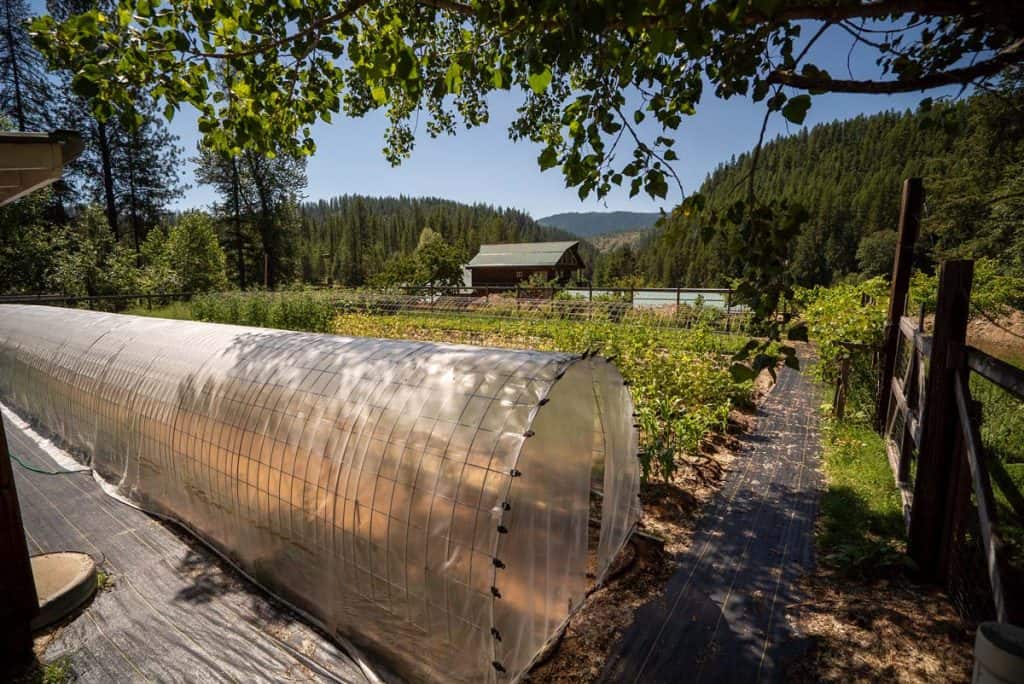
More Posts You May Enjoy
- How to Raise a Year’s Worth of Meat
- Our Barn Management System
- Deep Bedding Method for Livestock (Cleaner Barns & Healthier Animals)
- Nutritional Benefits of Organ Meats and Cooking Tips
- How to Grow a Year’s Worth of Food with Melissa K. Norris
Josh: Hey, you guys. This is Josh.
Carolyn: And Carolyn.
Josh: With Homesteading Family, and welcome to this week's episode of the Pantry Chat: Food For Thought.
Carolyn: This week, we are talking ... And now you're laughing at me.
Josh: I wasn't laughing. I was-
Carolyn: You made me laugh.
Josh: ... Smiling at you.
Carolyn: Well, this week we are talking about multi ... Sorry. It's a mouthful. I can't say it.
Josh: This week, we are talking about multi-species rotational grazing for the small homestead.
Carolyn: There we go. You got it.
Josh: That is a mouthful, but it's easier than it sounds.
Carolyn: Yeah. Yeah. The topic is a lot easier to understand than it is to say.
Josh: Well, and this is something that we've done for a long time, and studied a lot. Matter of fact, besides gardening and a few chickens, we got our start scaling up homesteading raising beef cows, on ... Actually, a little larger acreage. And studying Joel Salatin, and Greg Judy, and a lot of the well-known holistic grazers.
Carolyn: Right.
Josh: But it's something we haven't talked a lot about here, at Homesteading Family.
Carolyn: Well, and one of the challenges with studying them ... Just as an introduction, then we'll get to the chitchat ... Is that they're working on really large scale.
Josh: Yeah, they are. And Joel does a great job of breaking it down. In his systems, you can use from an acre to a thousand acres. But a lot of times, the way the information's presented, it's hard to distill it down for the small homestead. What if you're on an acre? What if you're on three acres, or 10? How can you raise a lot of meat, a lot of animals, and do it resiliently, sustainably ... While improving your pastures? I think that's been a challenge to distill, and talk about. And so we want to enter into that a little bit, and talk about what that is. And I don't know how far we'll get today, but maybe this will be an ongoing conversation. And we'll see if it's something that interests you guys.
Carolyn: All right. Sounds good. But before we get into that, we need some chitchat. If you are new to the Pantry Chat, know that everything should be timestamped for you. So you can skip ahead if you are busy, or you don't want to listen to chitchat, or you want to just jump into the main topic. You can skip ahead to the main topic, but we like to do the chitchat.
Josh: Yeah. Just scroll down, and the timestamp will be in the description feed.
Carolyn: There you go. What have you been up to?
Josh: What have I been up to? Well, on topic ... We're doing a lot outside. That's been a little slow to get started this year, but we're working on getting animals out. We've actually got the pigs, the Kunekunes, out on grass. They've been out on grass for a week or two now.
Carolyn: Oh, good.
Josh: We've got some of our laying hens out on grass, and we're just ready to start in with our rotational grazing. We've got sheep. Sheep shearers coming, actually, today. After they're shorn, we can get them out and ... Them and the chickens into rotation. And so actually, just getting our fences set up, and getting a plan going for this year's grazing. And well, we're on 40 acres right now. We're rotationally grazing little over three. It's probably about four acres. And then we have some other ground that's just being lightly used by the beef cows. So it really is that small homestead, and it's amazing what you can accomplish.
Carolyn: Our whole super productive area of the homestead is what, only five acres? Eight acres?
Josh: It's under five acres. It's under five acres. And that includes two houses, a couple ponds, pasture, and gardens, and orchards, and other infrastructure. Barn, and whatnot. But that's on five acres. And we produce 90% ... 80, 90% of what we do on that five acres for 15 to 20 people.
Carolyn: Yeah. So you can do a lot in a small space. And I think this is a major part of it, is the rotational grazing. But we're not talking about that yet. We're talking about what you're doing.
Josh: Good. Well, that is what I'm doing. So we're getting that set up. We actually have some other land that we're going to get ready to clear, that's in really degraded forest. It's been logged, unkept, and it needs to go to pasture. So we're starting some work on that. I'm actually just feeding cows, beef cows, up there right now. There's some roads, some very compact stuff. So instead of turning that up, I am rolling out grass, and feeding them on that, to build up organic matter and fertilizer via waste from the cows.
Carolyn: Yeah. This is exciting, because we're letting the cows do the work, right? Instead of bringing in machinery and ripping up the land, we're letting the cows actually come in and do that in a much more gentle way.
Josh: Right, where we can. And we're going to have to bring in some light machinery to remove trees. But even that ... We're going to do that without turning the ground over, and leaving the structure in place. And so ... Man. Working on that. We've got gardens going outside. We got an orchard in. We already had fruit trees. I don't know. We had a dozen fruit trees or so, but they were kind of random around the property. And so we picked an area between the house and the main crop garden, and put in 19 trees recently. So that's exciting. A lot happening this year.
Carolyn: Yeah.
Josh: Yeah.
Carolyn: Yeah. And today, tomorrow, and the next couple of days, we have the first round of meat chicks coming in.
Josh: Oh, that's right. Yep.
Carolyn: And turkeys.
Josh: Yeah.
Carolyn: So that's exciting. We're actually doing two rounds this year, because ... As some of you guys know, we have a son who has started raising and selling pastured chickens and turkeys. And that's really exciting.
Josh: Really is. It's fun to see him picking up the vision. It's not really been our goal to farm ourselves, but to set it up for the next generation. And he's stepping into that. This is his third year. He's been working his way up slowly, but he's doing 200 broilers, chicken broilers, and I don't know how many turkeys. A dozen or so.
Carolyn: I think it's more than that. I think it's more like 25.
Josh: Oh, wow.
Carolyn: Yeah. So we've got a lot of them coming. So if you live in the area, and you're interested in really well-raised, pastured turkeys and chickens, send us an email.
Josh: Send us an email. But we can't ship, so don't send us an email asking if we can ship.
Carolyn: No.
Josh: Not doing that. And we're not anywhere close to doing that.
Carolyn: Yeah, right.
Josh: But what about you? What are you up to, in this busy May season? May, for us, is the kicker of the year. Though, we have a lot more hands this year, so that's really nice.
Carolyn: Yeah, we do. Every year, as the kids get older, they're much more helpful. It's wonderful. And then they get really helpful, and then they leave, or get a full-time job and they can't be as helpful.
Josh: They do. We're also bringing interns in. We actually have two interns here. And we'll just put that out there. One, it's a huge help to us. We need it. But next year, we'll be looking for more interns. So those of you that are interested, just keep your eye out for that.
Carolyn: Yeah, absolutely. So that's been a big help having-
Josh: It really has.
Carolyn: ... Having the extra sets of hands. But right now, we are getting everything in. Today, we're actually putting in tomatoes and peppers and cucumbers. Those are all going in the hoop house. And then, the storage crops of carrots and-
Josh: Beets.
Carolyn: ... Beets are going in today. And so trying to get it all in. We have a break in the weather right now. We're having a couple of cool, mellow, cloudy days. So it's good for the people who have to work in the garden, but it's also really good for the plants, especially when we're transplanting.
Josh: Not too much heat right away.
Carolyn: Yeah. So we're getting all of those things in right now. Out in the cottage garden ... The cottage garden looks amazing. And we have had so much success in the terrace garden so far, which is kind of an extension of the cottage garden, right out of the kitchen. Because we got things planted so early, we really utilize cold frames and little, low tunnels. And so now, we're just trying to keep that going. So all those things-
Josh: It's doing good.
Carolyn: ... Are just moving along.
Josh: Yeah. The terrace gardens are expanding.
Carolyn: Yes.
Josh: And we've had earlier greens this year than most years.
Carolyn: I just won my first major battle in the war against grass in my cottage garden beds, which I'm very excited about, because this is a yearly battle ... Trying to keep the grass out of the beds in the cottage garden. And so we actually put in eight-inch steel edging. There's a wall trying to protect a little bit. We have some of the creeping grasses. I don't even know what they're called, what the specific names are.
Josh: Yeah, it's a native. I don't know what it is, but ... And that's in an area that we had cleared and layer mulched and everything. And so the problem's mostly ... And we had a few spots where it came through, but mostly from the edges.
Carolyn: Yeah, it's coming-
Josh: And if you've got one of those grasses, the roots are going to come through, unless you put up a barrier.
Carolyn: So everything we do, we try to create systems that make it easier to continue doing what we're doing the next year. And I just really felt like we weren't holding true to our values out in the cottage garden, with that grass. And so this is the first step to making that easier. So I'm really excited about that. I think that's a good step forward. But boy, have we got beautiful flowers up all over the place. We've got all of our herbs coming up in the cottage garden. It's perennial vegetables. The sorrel, the Good-King-Henry, and the Caucasian mountain spinach are all looking really, really good out there. So I've been up to a lot of that.
Josh: Yep.
Carolyn: Yeah.
Josh: You sure have.
Carolyn: Yeah.
Josh: Busy season. Good stuff happening.
Carolyn: Okay. You want to get into a question of the day?
Josh: Sure.
Carolyn: All right. This is from Teresa Hansel, on the home dairy products versus store-bought. She asks, "what kind of cows do you have, both for milking and beef? And do you milk morning and night, or just once? And why'd you choose the milk cow you did?"
Josh: Wow. Well, there's a lot there. Let's answer the first part, which is what kind of cows, for milk and beef. And so for the beef cows, we have Herefords. Love them. They're older generation Herefords, so they're a little smaller than what you might mostly see for Herefords today. But they flesh better on grass. That means they meat out, they come to maturity better, just on grass. And they're also just very mellow.
Carolyn: They are so mellow.
Josh: So we love them. There are lots of good breeds out there. I don't know that we'll stick with pure Herefords, because they're hard to find ... The ones that we want, actually. And so we may go to a little more local, but definitely going to work towards that smaller size, that heritage frame. And they've been great for us. So that's what we have for beef cows. And then the dairy cow, she is a Jersey with a little bit of Friesian in her, and what I call a black Jersey. And we've had two of these, and we love them.
Carolyn: Yeah. They have been great milk cows. They give a ton of cream. They're very easy to work with. They have a better tendency to take with AI, if you don't have a corral.
Josh: Ours have, yeah.
Carolyn: Ours have.
Josh: I don't have any ... That's only anecdotal, but yeah.
Carolyn: Yeah, right. Because Jerseys are kind of known to be really hard to AI, and not always take. And so we've had a lot of success with these. And they give us a lot of cream. So we like that.
Josh: And they've been good keepers. They're a little larger. So for some holdings, they're a little bit big. They're on the larger side for a Jersey. They're not like a Swiss dairy cow, but they are a little bit bigger. So if you have a small holding, that might be a little bit large for you. But they've been very good animals.
Carolyn: She gives a lot of milk. Both of them have. They've given about eight gallons a day at max.
Josh: At max.
Carolyn: Yeah. At max, in a year.
Josh: At max, on grass. Yeah. And it's like Carolyn said, though. It is creamy eight gallons. So for our household, that's really, really good. And as far as milking morning or night, we're kind of all over the place. We kind of work it seasonally. And so we start out milking twice a day. Part of that's because this particular cow hasn't shared her calf very well, and we might ease into it little bit slower.
Carolyn: Hasn't shared her milk with the calf very well.
Josh: Well, or with us, when she has the calf.
Carolyn: Exactly.
Josh: She's like a great cow, if the calf's not around. But I think she's also such a great mama, that she holds back her milk. She's real restless in the stanchion if she knows that calf's around. The calf goes bye-bye, she's wonderful. So anyway. So we usually are removing the calf quickly, milking twice a day for, what ... The first five months or so. Five to six months, depending on the season. And as it gets towards fall, we go down to once a day milking, lighten it up a little bit. And then we dry her off right about three months before she's due again.
Carolyn: There is a place in the season where all of a sudden cream doesn't turn into butter.
Josh: Not as well. It's very-
Carolyn: Not as well. It takes a very long time. There's actually all sorts of science behind that, that I have just found. I couldn't recite it to you yet, but there's this place where it just stops turning. And so at that point, we kind of figure, oh, we've had enough in storage. Usually the cheese cave is full by then, and we're just getting drinking milk for the family. And we just don't need that many gallons every day, to do twice a day milking.
Josh: Yeah. Yep.
Carolyn: Good.
Josh: That is it. That's our dairy cow.
Carolyn: Yeah.
Josh: Yeah.
Carolyn: Yeah. She's nice. Her name's Tilly. Okay.
Josh: All right.
Carolyn: We're jumping in.
Josh: Multi-species rotational grazing for the small homestead. That's a mouthful.
Carolyn: Can I just call it rotational grazing?
Josh: Yes. What do you want to know?
Carolyn: Okay. What's it all about? Because I know this is something that people are hearing about, and they see referenced places, but how is this different than just throwing your animals out in a pasture?
Josh: Right. Okay. So let's unpack that a little bit. Rotational grazing ... We'll go to there, first. That is just moving the animals around. So in nature, when there were no fences, what did grazing animals ... Ruminant-type animals do? They moved around the landscape, finding the highest quality feed. So they moved a lot. They had room to move. And they didn't stay in one area and eat all the grass or forage down low and then move on. Forage, the best quality in most of the season, is at the top few inches. That's where the best nutrition is. That's where the best taste is. Those things go together.
So animals would move across the landscape to find the best feed. And that had a lot of other benefits to it, and it had benefits to the environment, in not destroying a certain area and moving the parasites around. They didn't build up in an area. Also protect them from predators. A lot of different things there. But they kept that feed well, and it managed the land well.
Well, then we started putting fences in and leaving the animals in fixed areas. And what starts to happen is that the animals know ... I mean, they know what they like, but what they like is what's best for them. And so they're going to take that, first. And then they're going to come back to the next best thing.
And what eventually starts to happen is they keep coming back to the next best things over and over. And they eat those down, and they ignore some of the other species that maybe are valuable, but they're not as valuable. They're not as tasty. And they start to degrade the land, and they take it down to the point that they will destroy the best quality pasture, and forage in that pasture. And you'll end up with a degraded pasture of mostly annuals and lower quality. And eventually, you've got water runoff issues and all kinds of different degradation.
So rotational grazing is seeking to mimic that pattern within our fixed boundaries. We've got a piece of land. Whether you've got an acre or a hundred acres or a thousand acres, we're trying to control ... Move those animals. Since they don't have free-range, they can't just pick whatever they want on the open range. So we have to help them out by keeping them in a smaller area, giving them the right amount of feed, allowing them to manure it and fertilize it, and then moving them on through that space. And so we're rotating them through the land in a way that feeds them well and actually builds the land, instead of degrading it.
Carolyn: Okay. So that makes a lot of sense, just thinking about how animals' behavior is public, like in nature. How small can this apply to? Does this apply to somebody in a backyard with a couple of chickens, for just the rotational grazing part?
Josh: Just the rotational grazing part, without the multi-species, yes. Absolutely.
Carolyn: So you can just give your chickens a few square feet, and move them around?
Josh: Well, sure. Instead of having them ... Because chickens do the same thing. And we were just watching this. We're getting our layers out early. We're getting them on pasture. And they had a fairly big area in the chickshaw, where they're moving. But what would they do? Leaving them in there for a couple days, they had their spots they wanted to go back. And right away, they were tearing holes into the grass and creating dust baths. And they've got this giant area. They're not harming the forage at all.
But for the chickens, they're creating this impact that's not good. And it takes them a couple days to do that. One day, two days, they don't do too much. But you leave them sitting there, they do. So even in a backyard, you can contain your chickens, either in a netting or a chicken tractor ... Those of you that are familiar with that. And you can move them from spot to spot. Yes, you have to move them every day, but you're giving them new feed. They're fertilizing, and they're moving around. And there's no reason you can't do that in a backyard.
Carolyn: Absolutely.
Josh: And my next thought is ... Well, depending on the size of your backyard, do you want to run rabbits in there? And there's this theory. I haven't done this, or even seen this on a small holding, but I think you could even get to the multi-species part. But there's no reason you couldn't do chickens, you couldn't do ducks, you couldn't do geese, you couldn't do rabbits. Those are the ones that come to mind ... In a pretty small yard.
Carolyn: Okay. So as far as rotational grazing goes, this is something that you can do, whether it's really small or really big land. So this can apply and have benefits for people at all different levels.
Josh: Right. And let's talk about it just for a second, on the other side. On larger land, could you do it with single species, like we're talking about here? Just chickens or just ducks. Could you do it? Yes, you definitely can. The same principles. You're moving them around through nature, getting them the best feeds, fertilizing, and letting that land rest ... Is the term that we have. And let it regrow. And often, managed well, you can come back. Depending on your environment and a lot of other things, you can come back and re-graze that a time. Maybe two. People like Joel Salatin, they can come back around six times in a season. But he's developed that over years, and his climate plays into that. But it becomes very powerful, even with a single species.
Carolyn: Okay. So now let's talk about adding that layer in, of the multi-species. And what is that? Why would you do that?
Josh: Well, again, we're looking to nature. We're looking to creation for the answers. There are no monocultures in nature. God didn't create monocultures. There are always inter-working species and systems. And that aligns with what we're trying to do, as homesteaders and stewards of the land. One, we want to take good care of the land. Two, we need to produce for ourselves, and create our own resiliency in our food systems as much as we can on the land that we have. Well, nature allows that.
And you can start combining species to create benefits, and run multiple types of animals. And a real common one that people talk a lot about is the ruminant, like the cow and the chickens. That's a ruminant and a bird. And in nature, you would see, say ... In American context, buffalo, and birds following the buffalo. And the birds help with parasites. The manure created certain bugs that the birds would eat. And there's a whole symbiotic relationship there.
And so we're mimicking that. We're not necessarily accomplishing everything that was happening in that broad natural system. But we can take a cow, lead the cow ahead in the feed ... Say, a dairy cow, is a great combination for a small homestead. And put a dairy cow in. She's in front, and behind a couple days, the chickens are coming. Your meat chickens or your egg layers.
And what's happening? Well, the chickens are coming behind. Often, that manure has gotten fly larva or something in it. You're feeding the chickens. They're spreading the fertilizer. The cow patty's out. They're spreading it out. So it's not clumped, because when it clumps, you get high nutrient density. And the cows actually won't come back to that for sometimes a year or more, when you bring them back in. And so the chickens are spreading that out, and evening the fertilizer in your system. And now you're raising two sets of animals and products on the same ground, done correctly.
Carolyn: So it's beneficial to both, because you're spreading that out, so the grass is getting better for the cows for the next time they come through. The chickens are eating off the fly, manure.
Josh: The fly, other parasites.
Carolyn: Or the fly larva, or anything else that's in that poop.
Josh: And they're fertilizing. The chickens-
Carolyn: I should call it manure. That sounds better. Sorry.
Josh: Okay. Manure instead of ...
Carolyn: Poop.
Josh: Oh, got it. Manure. Okay. Manure, it is. I like fertilizer. Let's call it fertilizer, because that's what it is. And that's one of the huge benefits, when you realize that it's fertilizer. In our industrial mindset, we've got to fertilize our gardens. We've got to fertilize our lawns. We've got to fertilize our pastures. Nature was made to do all of that. It's the animals. We're actually controlling the distribution of fertilizer, which is increasing the quality of the feed, which allows us to better feed our animals and have a better quality feed for ourselves.
So you start to get this system going, that's really working together. And guys like Joel Salatin will run the chickens ... Even though he's running a large business, he'll run the chickens just to fertilize the grass to feed the cows. Let alone, that he then gets to sell the eggs or the meat. But there's a lot of economic proof that just that fertilization, and doing that labor provides enough benefit to make it worthwhile.
Carolyn: So I think this is such an important principle here on this, because when we look at a pasture, we kind of naturally think, "What can it do for us?" We can feed some animals on there, and get some meat out of it. Or maybe some eggs out of the chickens. But we always want to be in this situation, where we're thinking about how we can improve what's around us. How can we improve the land? How can we improve our soil? How can we improve the grass? We want to be a net benefit, when we show up somewhere. Not a drain, like humanity is so often a drain on the environment around us.
Josh: That's our tendency, right?
Carolyn: And so we want to show up. And this is one of the things that you can really do, to benefit the land in a lot of ways, because you are making that pasture better not only for the animals you're running, but for every species that accesses those pastures. So you get a better return on it. Your animals are healthier. They're happier. They're living a more natural life. They're more naturally resistant to disease and things that comes through, because they're constantly moving on to fresh pasture. They're not having the same type of parasite issues.
And so that just puts them in a altogether healthier state, between the nutrition and not being weak from parasites. And so you're just improving the entire state of the land around you, and its productivity, and the health of everything, when you start increasing in your pasture. And you can do this directly with the animals, if you're doing it correctly, which is so exciting.
Josh: Right. And it's important to note the doing it correctly. So the common thing is to take animals and just put them out on a piece of land, and that land degrades. And humanity's been doing this. It's not just us in America, and homesteaders, that might have that tendency. Humanity has been doing this for years. And desertification is a real thing. Civilizations have desertified an area by just putting the animals on it and overusing it.
People are doing that on a small scale, as well. And it doesn't have to be that way. It just has to be managed correctly. And it does take some work. It does take some involvement. But when you get systems up, like you were talking about earlier, and you have systems to do this and you pay attention, it's not that much work, especially for the reward ... For the fruit of your labor. Not just in this year, but you're building resiliency, having done it right, into the landscape. And you're creating surplus.
And you know, you just made me think of the core principles that I look to guide our systems in what we do. And that's core permaculture principles, which are caring for people, caring for the earth, the land, and creating a surplus. And nature is made in such a way that we can do all of those at the same time. We can feed ourselves. We can improve the quality of the land while we're doing it, and have enough surplus to, say, improve the land with the fertilizer that we're creating, and enough food to share or sell with others. And so there's that abundance. And that can grow as we get better and better at this.
Carolyn: Yeah. That's exciting.
Josh: So it really is-
Carolyn: It's not ... Modern economics, I guess I want to say, kind of says either you have or I have. You take something away, and so therefore the other person doesn't have. You take something out of the pasture, so the pasture's degrading, right?
Josh: It is. And then we look at it-
Carolyn: That's kind of modern conventional agriculture. And then you look at this and you're like, "No, I can add." I mean, this is like God's economy, isn't it?
Josh: Oh, it totally is.
Carolyn: The more I give, the more I get back, sort of a thing. And that's what happens here. The more you put into it, the more energy, the more focus, the more animals and movement and things like that, the more you end up getting back, if done correctly.
Josh: I think it's a beautiful imagery of God's gracefulness to us expressed in nature, that even though there's all these challenges in nature, and it's easy to degrade ... If we'll work with the principles and the way things work ... That's why we talk about looking at nature. We're not trying to do exactly what nature's doing. We're trying to look at how does nature work? How can we put this into, then, a controlled situation and apply those principles, in a way that does everything you're talking about? And that that's just ... To me, that's exciting and it's God's grace to us through nature.
Carolyn: Now, I think all of these things are so neat in theory. But what I really think is neat is seeing it play out in our own pasture, because we've been kind of on a journey. When we got to this property, it was very degraded. The pasture was-
Josh: Degraded, sprayed, trampled on, fertilized, chemicalized.
Carolyn: It was everything. It was not in good shape. It was pitted all over with holes. It was rough. And here we are. And we've got sheep going out, pigs going out, chickens going out, cows going out. All coming through this space, and it is amazing to see it just get more and more lush as we do that, which is really kind of neat.
Josh: Well an example of that, real quick, is that ... The first year we got here, we put out four sheep. Uncontrolled, because it looked like it had ... We were busy. We were getting settled. We were doing all kinds of things. And I said, "Oh, that several acres can handle four sheep for a couple months." I didn't have time to rotate. I knew better. And the four sheep tore up the land. And so the land couldn't support them.
Come now, we're in our fifth season. And that same ground is supporting, like you said, a dairy cow, probably ... I don't know. Eight sheep this year, 70 laying hens. We're going to run over 400 chickens through it, and some pigs, as well. And that's just in a few years, the increase of that same plot of ground, from applying these principles.
Carolyn: And that's only after a few years of applying the principles. So it's like we are seeing it get almost exponentially better, year after year, which is really exciting, because it's like ... Gosh, 10 years from now. So to me, it's really exciting to say we inherited ... We bought this piece of land that couldn't even keep a couple sheep alive for a few months. And what we're going to pass on to our children, or the next buyers of the property, or whatever it is-
Josh: Our children.
Carolyn: Our children ... Is something that is robust and resilient, and can support a lot of life. And that, to me, just speaks well of good ... Taking care of what we have, which is important to do.
Josh: Absolutely.
Carolyn: So you guys, this is something that ... If you are grazing any sort of animal, or you're interested in grazing any sort of animal ... If you have some land, it's something that we really want to encourage you to look at, to consider, and to dive into how you might start rotational grazing, and adding extra species in to help each other be the symbiotic relationship there, to speed up healing the land, but also keeping it really fertile.
Josh: Yeah. And we're going to bring more of this to the table, I think, this summer. And let us know if this is a subject you're excited about. We can talk about it here more. And we can also get out into the pasture and do a few things, as well as some other educational material coming this way.
Carolyn: Definitely let us know. Leave a comment below. And if there's other things you want to hear about in The Pantry Chats, please let us know. That always helps us to know what you are thinking about, and what we can help with.
Josh: That's why we're here.
Carolyn: All right, you guys. It's been great hanging out with you.
Josh: See you soon.
Carolyn: Goodbye.
Josh: Bye. Thanks for listening to this episode of The Pantry Chat: Food for Thought. If you've enjoyed this episode, please subscribe, rate, and review.
Carolyn: To view the show notes and any other resources mentioned on this episode, you can learn more at homesteadingfamily.com/podcast.
Josh: We'll see you soon.
Carolyn: Goodbye.
Sign up to receive email updates
Enter your name and email address below and I'll send you periodic updates about the podcast.






